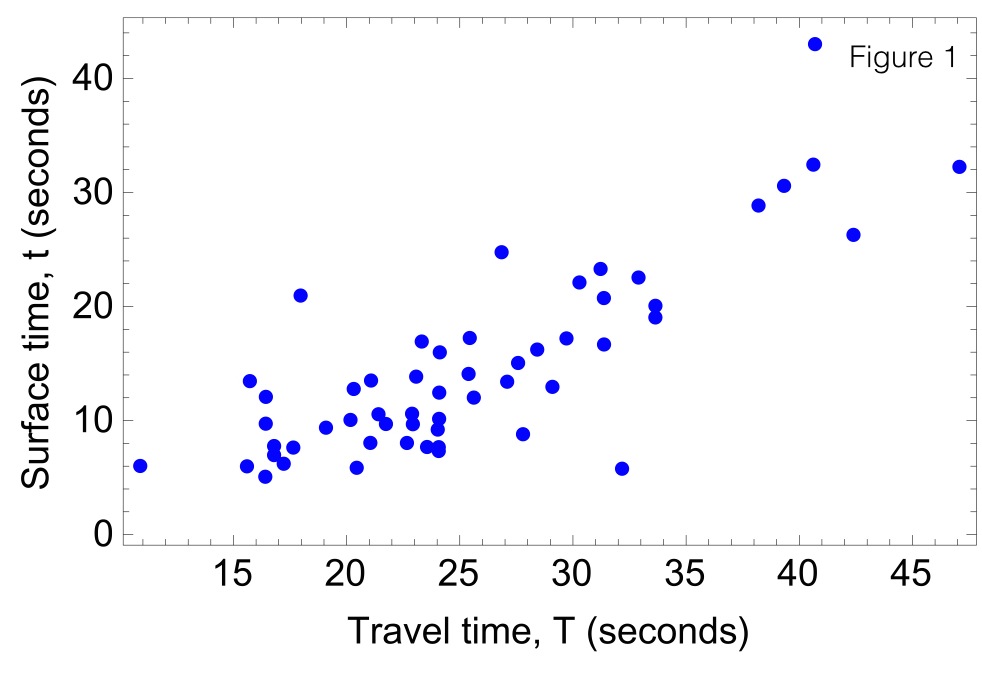The model for optimal surface time in aquatic birds from Example 4.4.4 of the textbook has been tested in a species of bird called the Marbled Murrelet (Brachyramphus marmoratus). To do so, researchers first used the model of Example 4.4.4 to show that as the travel time T to the underwater foraging area increases, the predicted surface time increases as well. This makes intuitive sense since we might expect birds to spend longer on the surface replenishing their oxygen stores if they need to travel further underwater.
Jodice and Collopy (1999) measured both the travel time and the surface time of foraging Marbled Murrelets. Their data are presented in Figure 1.

You can see that these birds do in fact tend to spend more time on the surface between dives when the travel time to the underwater foraging area is larger.
References
Data are from Jodice, P.G.R. and M.W. Collopy. 1999. Diving and foraging patterns of Marbled Murrelets (Brachyramphus marmoratus): testing predictions from optimal-breating models. Canadian Journal of Zoology 77:1409-1418